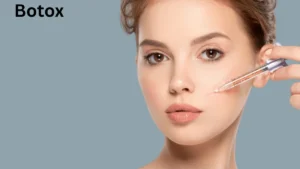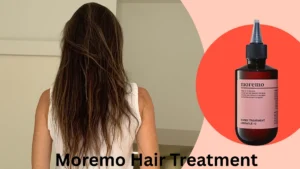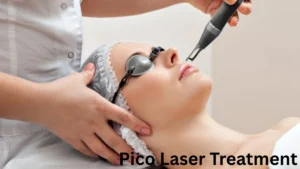Botox has emerged as a revolutionary treatment that bridges the gap between cosmetic enhancement and medical therapy. Approved by the U.S. Food and Drug Administration (FDA), Botox is widely used to reduce the appearance of wrinkles and treat a variety of health conditions ranging from migraines to muscle spasms. If you’re curious about what Botox can do, this guide will walk you through everything you need to know — from its uses and benefits to safety and cost.
| Aspect | Details |
|---|---|
| Common Uses | Wrinkle reduction, migraine prevention, muscle spasms, excessive sweating. |
| Administration Method | Injected into targeted muscles using a fine needle. |
| Time to See Results | 3 to 7 days for initial results; full effect in 10–14 days. |
| Duration of Effect | Typically lasts 3 to 6 months. |
| FDA Approval | Yes, for both cosmetic and therapeutic uses. |
| Common Treatment Areas | Forehead, crow’s feet, frown lines, neck, jawline. |
| Side Effects | Temporary bruising, swelling, headache, or muscle weakness. |
| Who Should Avoid It? | Pregnant or breastfeeding women, people with certain neurological disorders. |
| Average Cost (India/Global) | ₹250–₹600 per unit in India / $10–$20 per unit globally. |
| Medical Conditions Treated | Migraines, hyperhidrosis, cervical dystonia, bladder dysfunction. |
What Is Botox?
Botox is a brand name for botulinum toxin type A, a purified protein derived from Clostridium botulinum bacteria. When injected in small, controlled doses, Botox temporarily blocks nerve signals to specific muscles, thereby relaxing them. The effects typically last 3 to 6 months, depending on the treated area, dosage, and individual response. Although it originated as a medical solution, its cosmetic applications have skyrocketed in popularity over the last decade.
Cosmetic Uses of Botox
Anti-Wrinkle Treatment
Botox is best known for smoothing out dynamic wrinkles caused by repetitive facial movements. It is commonly used to target forehead lines, frown lines (between the eyebrows), and crow’s feet (around the eyes). By relaxing the underlying muscles, Botox softens the appearance of these fine lines and restores a youthful look.
Other Cosmetic Applications
Beyond wrinkles, Botox can address several aesthetic concerns such as gummy smile, bunny lines, jawline slimming, and neck bands. These applications help refine facial features and improve confidence.
Medical Uses of Botox
Chronic Migraine Prevention
FDA-approved for patients who experience 15 or more migraine days per month, Botox helps reduce headache frequency and intensity.
Muscle Spasms
Botox effectively treats cervical dystonia (involuntary neck movements) and blepharospasm (uncontrolled eyelid twitching).
Hyperhidrosis (Excessive Sweating)
Botox blocks the nerves responsible for activating sweat glands, particularly under the arms, palms, and soles of the feet.
Overactive Bladder
Botox can be injected into the bladder muscle to reduce urinary urgency and frequency, especially in cases where other treatments fail.
Eye Muscle Disorders
Conditions like strabismus (crossed eyes) are also treated with Botox to realign the eyes and improve vision.
Read more: Pico Laser Treatment: The Revolutionary Solution for Skin Rejuvenation and Tattoo Removal
How the Botox Procedure Works
Consultation
The process begins with a consultation to evaluate your needs, goals, and medical history.
Injection Process
The treatment takes about 10–15 minutes. A fine needle is used to inject small amounts of Botox into the target muscles. It involves minimal discomfort, and numbing cream may be applied beforehand.
Post-Treatment Guidelines
Avoid rubbing the treated area for 24 hours, stay upright for 4–6 hours after the procedure, and refrain from intense physical activity for a day.
Benefits of Botox
Non-surgical with no incisions or anesthesia needed
Quick procedure, usually completed within 15–20 minutes
Fast recovery, with most people resuming daily activities immediately
Visible improvement within 3–7 days, lasting 3–6 months
Effectively treats both cosmetic and medical concerns
Read more: Top 10 Effective Lipedema Treatments: Causes, Remedies & When to See a Doctor
Side Effects and Risks
Common Side Effects
Temporary bruising, swelling or redness at the injection site, and mild headache or flu-like symptoms
Serious but Rare Side Effects
Drooping eyelid or eyebrow, muscle weakness near the injection site, difficulty swallowing or breathing, and allergic reactions
Most side effects are temporary and subside on their own. To minimize risk, always choose a qualified and experienced provider.
Read more: Plantar Fasciitis Treatment: A Complete Guide to Healing Heel Pain
Who Should Avoid Botox?
Botox is not recommended for pregnant or breastfeeding women, people with neuromuscular disorders such as myasthenia gravis, or individuals allergic to botulinum toxin or its ingredients. Always consult your doctor to determine if Botox is right for you.
Cost of Botox
Botox is priced per unit, and the cost depends on the area being treated, clinic location, and expertise of the provider.
Before and After Care Tips
Before Treatment
Avoid alcohol and blood thinners for 48 hours and do not apply makeup on the day of treatment.
After Treatment
Avoid facial massage and lying down for at least 4 hours. Skip heat exposure, tanning beds, and intense workouts for 24 hours.
FAQs
1. What is Botox made from?
Botox is made from a purified form of botulinum toxin type A, a neurotoxic protein produced by the bacterium Clostridium botulinum. It is used in small, controlled doses for both cosmetic and medical treatments.
2. Is Botox safe?
Yes, Botox is considered safe when administered by a trained and licensed medical professional. It is FDA-approved for various cosmetic and therapeutic uses. However, it may cause temporary side effects like bruising or swelling.
3. How long does Botox last?
The effects of Botox typically last between 3 to 6 months. Repeat treatments are required to maintain the desired results.
4. When will I see results after a Botox injection?
Most people begin to notice results within 3 to 7 days, with full effects visible in about 2 weeks after treatment.
5. Does the Botox procedure hurt?
Botox injections are generally well tolerated. Patients may feel a small pinch or stinging sensation during the procedure, but discomfort is minimal and temporary.
6. What should I avoid after Botox treatment?
Avoid rubbing or massaging the treated area, lying down for 4 hours, intense physical activity, and exposure to heat (like saunas or hot showers) for 24 hours.
7. Can Botox be used for medical conditions?
Yes. Botox is used to treat chronic migraines, muscle spasms, excessive sweating (hyperhidrosis), overactive bladder, and eye muscle disorders, among others.
8. Are there any long-term risks of using Botox?
When administered appropriately, long-term use of Botox is generally safe. However, repeated use may lead to resistance or reduced effectiveness over time in some individuals.
9. Can anyone get Botox?
Botox is not recommended for:
- Pregnant or breastfeeding women
- Individuals with certain neurological or muscular disorders
- People allergic to botulinum toxin or its ingredients
10. How much does Botox cost?
The cost of Botox varies depending on the number of units used, the treatment area, and the clinic location. It is usually priced per unit (₹250–₹600/unit in India, or $10–$20/unit in the U.S.).





